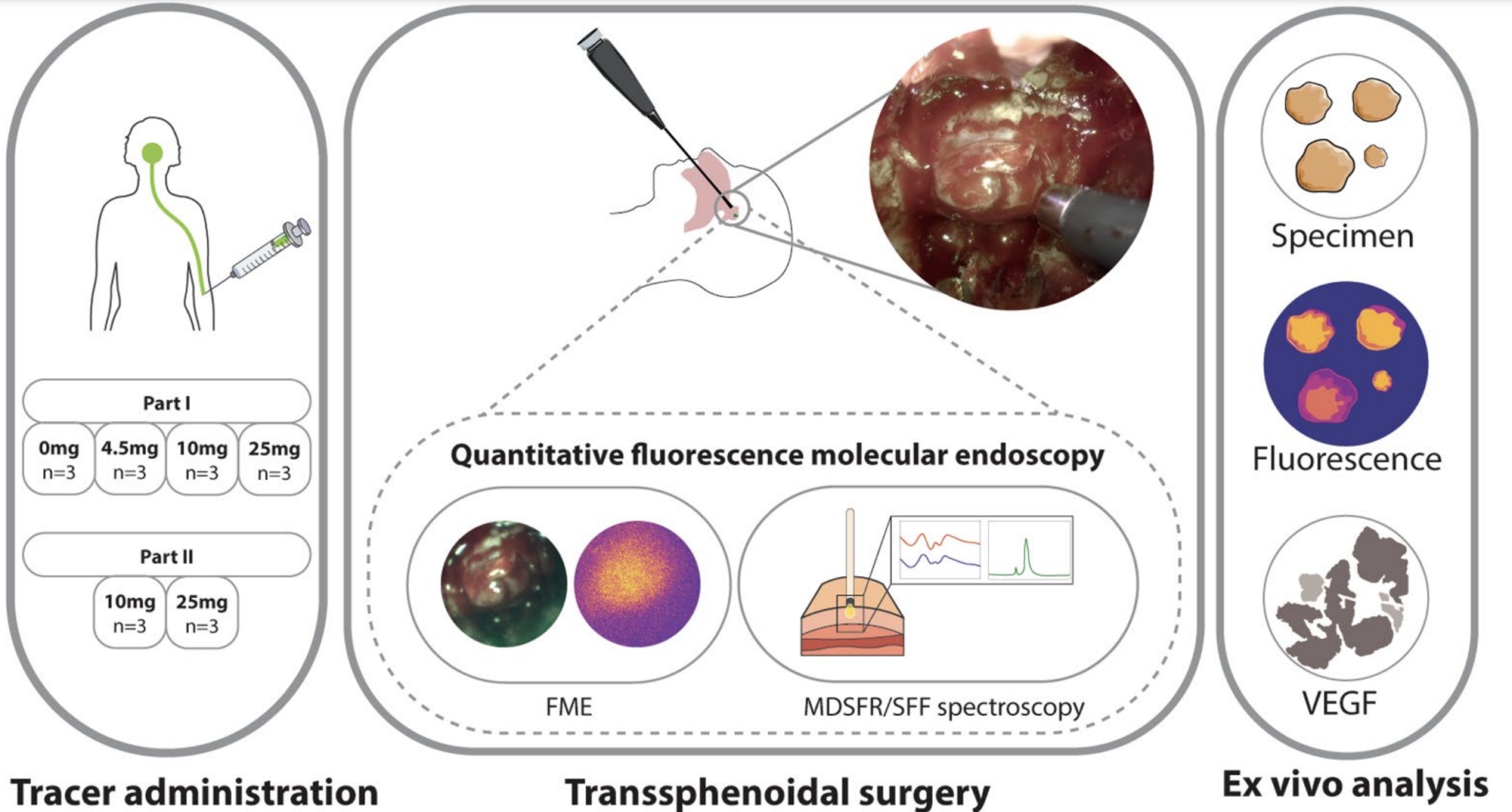New publication by Iris Schmidt in EJNMMI

Our latest publication by Iris Schmidt et al. entitled ‘Fluorescence detection of pituitary neuroendocrine tumour during endoscopic transsphenoidal surgery using bevacizumab-800CW: a non-randomised, non-blinded, single centre feasibility and dose finding trial’ can be found here.
Abstract
Purpose Achieving endocrine remission by gross total resection is challenging in pituitary neuroendocrine tumours (PitNETs) with cavernous sinus invasion. This study aims to assess the safety, feasibility, and optimal dose for intraoperative fluorescence imaging as an added instrument to discriminate PitNET from surrounding tissue using bevacizumab-800CW, targeting vascular endothelial growth factor A (VEGF-A). Methods In part I, dose-escalation (0–4∙5-10-25 mg) was performed in 4 groups of 3 patients with PitNETs Knosp grade 3–4. In part II, after interim analysis, the 10 mg and 25 mg groups were expanded to a total of 6 patients. Quantitative fluoroscence molecular endoscopy consisted of wide field fluorescence molecular endoscopy and multi-diameter single fiber reflectance / single fiber fluorescence spectroscopy. Mean fluorescence intensity (MFI) of the fresh surgical specimen was calculated and VEGF-staining was performed. Results Eighteen patients were included. All doses were well tolerated. Three serious adverse events were registered, but none were tracer-related. Part I showed an adequate in-vivo tumour-to-background ratio for both 10 mg (TBR 2∙00 [1∙86, 2∙19]) and 25 mg (TBR 2∙10, [1∙86, 2∙58]). Part II revealed a substantially higher MFI in the 25 mg group. With both 10 mg and 25 mg a statistically significant difference between tumour and surrounding tissue was detected (p<0∙0001). All surgical specimens had VEGF-A expression. Conclusion This study demonstrates the safety and feasibility of quantitative fluorescence molecular endoscopy during PitNET surgery. Both 10 mg and 25 mg bevacizumab-800CW result in clear differentiation in-vivo, with improved contrast ex-vivo (MFI) in the 25 mg group.
